34+ Sample Case Brief
-
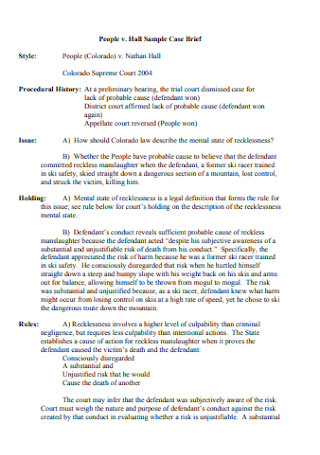
Sample Hall Case Brief
download now -
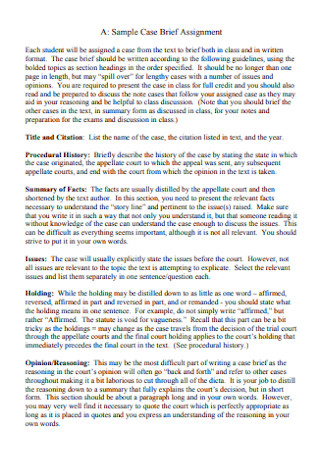
Sample Case Brief Assignment
download now -
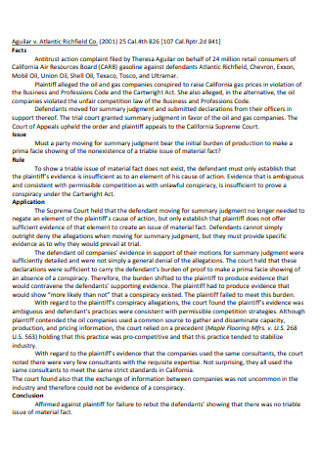
Sample Bar Association Case Briefs
download now -

Writing Skills Case Brief
download now -
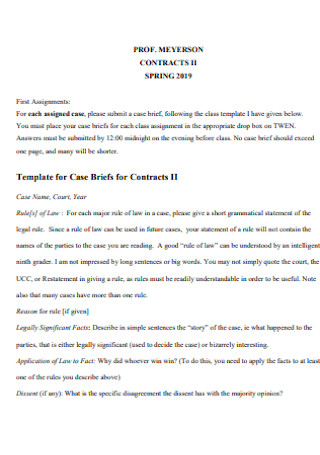
Case Briefs for Contracts
download now -

Problem Statement and Case Brief
download now -

Case Issues Brief
download now -

Legal Case Brief
download now -
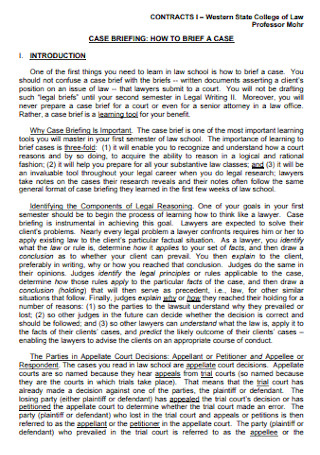
College Case Brief
download now -
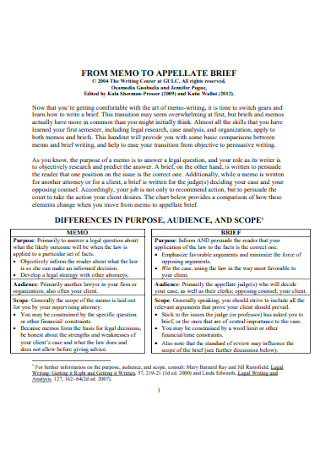
Case Appelate Brief Template
download now -
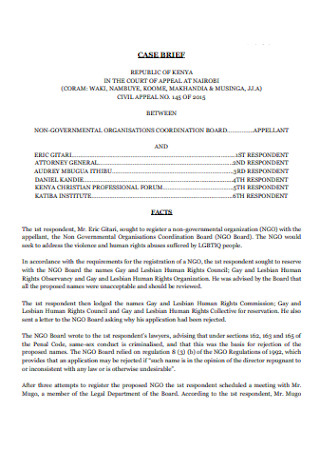
Case Facts Brief
download now -
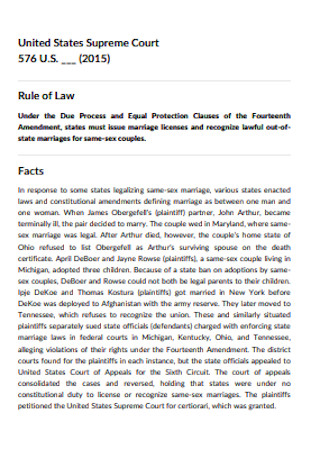
Supreme Court Case Brief
download now -
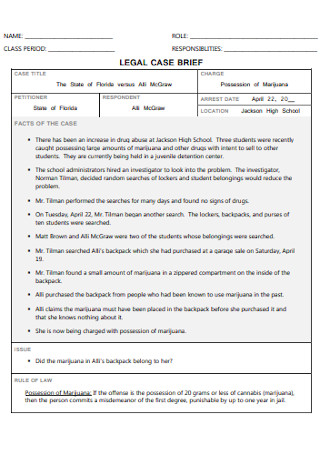
Sample Legal Case Brief
download now -

Sample Case Brief Template
download now -
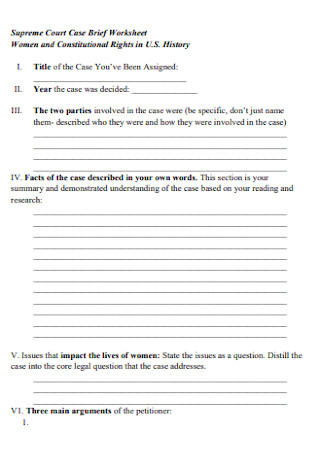
Court Case Brief Worksheet
download now -
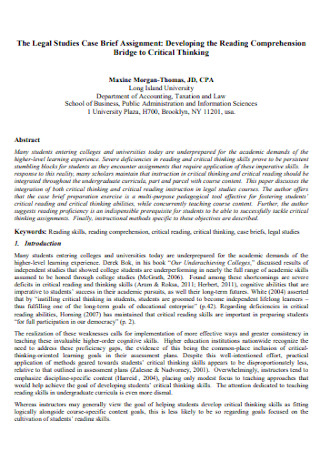
Legal Studies Case Brief
download now -
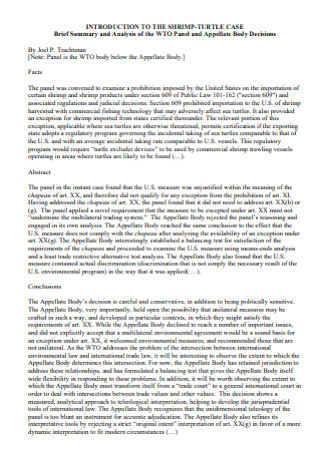
Case Brief Format
download now -
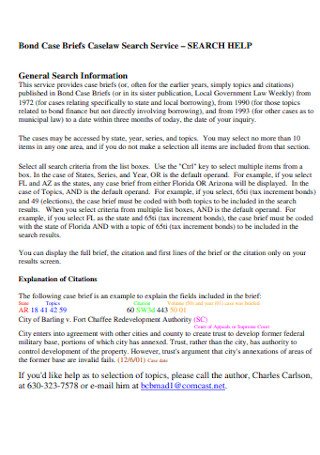
Bond Case Briefs
download now -

Case Conference Brief
download now -
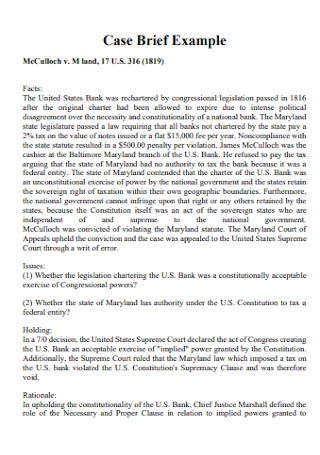
Simple Case Brief Example
download now -
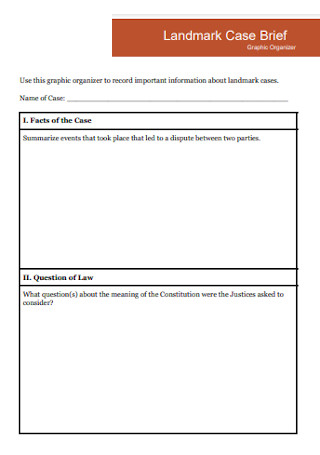
Landmark Case Brief
download now -
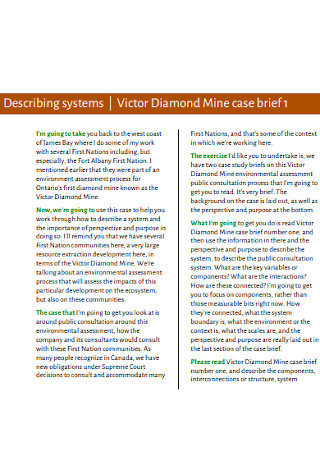
Victor Diamond Mine Case Brief
download now -
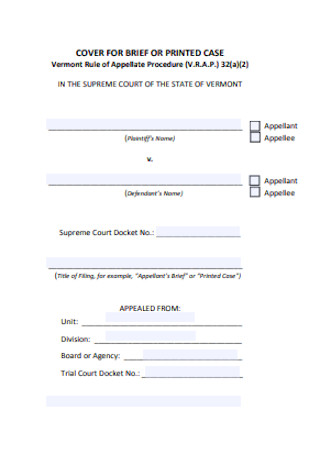
Cover for Brief or Printed Case
download now -
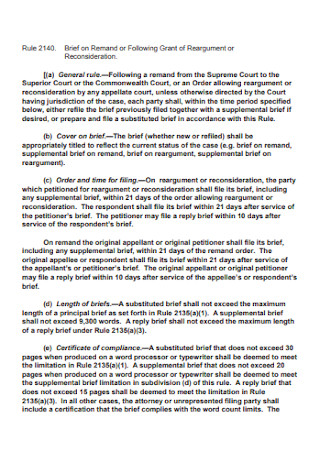
Case Reargument Brief
download now -

District Court Case Brief
download now -
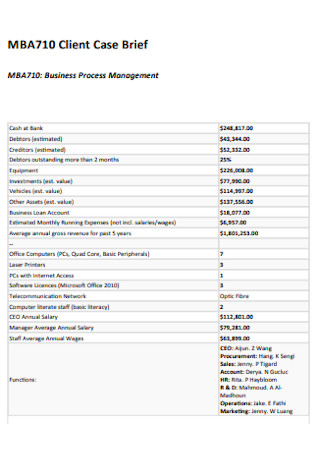
Client Case Brief
download now -
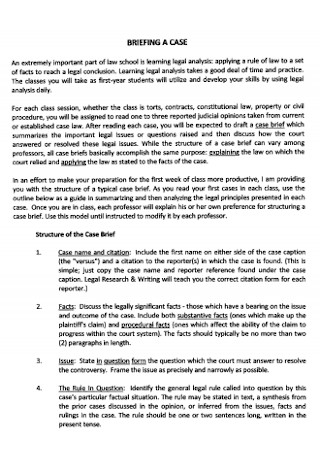
Formal Case Brief
download now -

Electronic Appellate Case Briefs
download now -
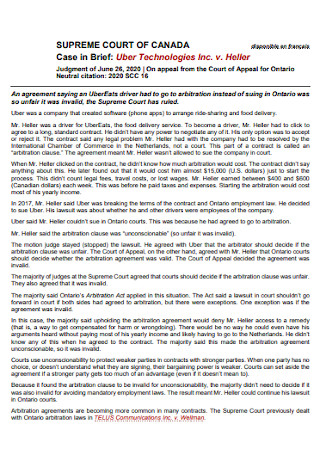
Court of Appeal Case in Brief
download now -
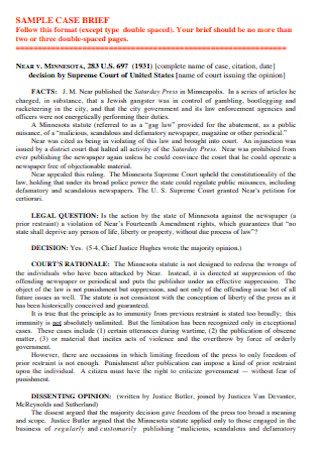
Sample Case Brief Example
download now -
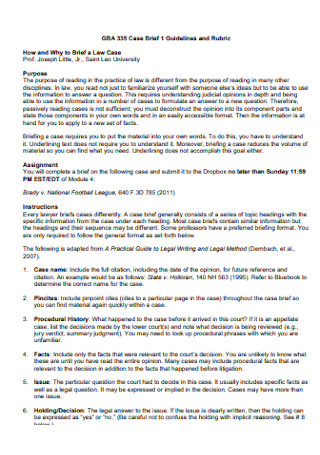
Law Case Brief
download now -
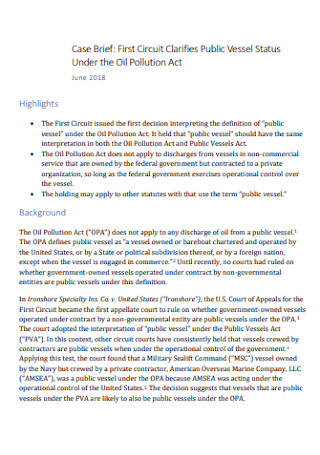
Oil Pollution Act Case Brief
download now -
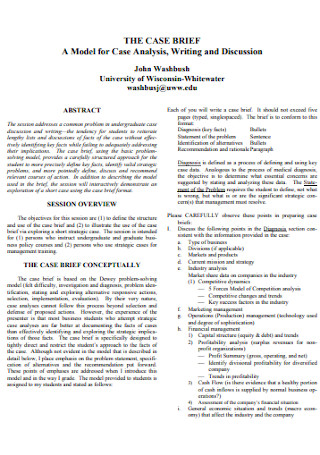
Case Brief Conceptually Template
download now -
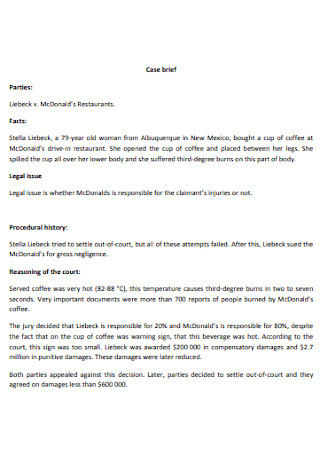
Printable Case Brief
download now -
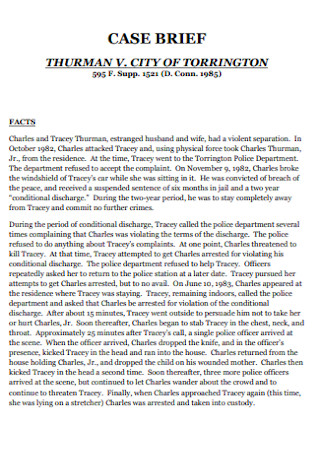
Professional Case Brief
download now
What Is a Case Brief?
From the name itself, a case brief is a short document that provides details of a legal or court case in a nutshell. It can contain several sections and can be summarized using various methods.
Did you know? The longest-running case that was ever fought inside a courtroom was that of the legal battle of Myra Clark Gaines. It took the American complainant and socialite 57 long years of court proceedings and litigation to establish her inheritance and control over her deceased father’s estate in New Orleans. The case even appeared seventeen times before the Supreme Court. But unfortunately, she did not live to see the US Supreme Court decision that eventually ruled in her favor. Myra Clark Gaines died at 78 years old on January 9, 1885. The legal battle lasted from 1834-1891, making it the longest case ever in United States history.
Types of Cases
In judicial procedure, cases are usually categorized into subgroups. Most people associate wrongdoing with criminal behavior. The state recognizes most of these wrongdoings; these may be labeled as an offense or infraction, and not necessarily a dangerous crime. Court cases come in different degrees and severity of criminality. Most cases fall under these three main types:
Parts of a Case Brief
There are different ways to write a case brief. Some contain more sections while others use a more condensed approach such as the IRAC method. Regardless of method, a case brief will typically contain the following components:
How to Write a Case Brief
Now that you have a general idea of what your case brief should contain, follow the steps below to get started. You have the option to use popular methods such as the IRAC method (Issue, Rule, Analysis/Application, Conclusion) to write your case brief. Or to make it more convenient, you may also use any of the editable templates above.
Step 1: Provide the Case Title
Make sure your title is styled the appropriate way and in the right legal format. Start your case brief by introducing the parties that are at odds. Assign the roles accordingly as defendant and plaintiff. In criminal cases, the prosecuting party is normally the federal government. It is usually stated in the manner of United States of America v. complete name of defendant. Further, case numbers are normally assigned by the court clerks. As you write your case brief, include this in the title along with the year. Each state has their own way of assigning or designating numbers for uniformity, it is best to check these beforehand.
Step 2: State the Facts of the Case
Information and facts are gathered in collaboration with law enforcement agencies such as police departments. Regardless if it is a criminal, civil, or family case, facts are important in the decision-making process of any courtroom. All case briefs require a clear and concise account of the facts. Describe the events of what happened and be specific with the details. Assign the appropriate legal labels when describing the characters in your narrative. It’s also good to maintain a consistent and chronological order of events. When stating the facts of the case, you want to avoid any unnecessary or irrelevant details that have little or nothing to do with the court decision. It is a case brief, after all, and not a comprehensive and lengthy study.
Step 3: Introduce and Describe the Problem
What was the complainant’s issue all about? What were the two parties fighting over? What was the nature of the crime? Once you’ve established the facts, state the issue clearly and describe it in question form. For instance, in a lot of civil court cases, the question of whether one party was negligent or liable is a common contention. Another example would be cases involving marriage and family issues. One possible issue is the question of who is most eligible to claim primary custody of a minor child. Another example would be in cases such as assault and battery. To what extent can a man be held responsible for cheering on a brawl between two men, and encouraging an attack that leaves one man permanently paralyzed? Is his negligence a crime? Or was he complicit for adding fuel to the fire?
Step 4: Provide the Rule and Reasoning
Lastly, answer the issue or problem statement by citing specific laws and explaining what the court’s final decisions were based on the facts. You can support your reasoning by providing specific details about what the court was able to prove or disprove. Justify the court’s ruling by citing instances based on the facts and existing laws. In other words, it basically means offering a legal analysis of the entire case. End your case brief by providing a short but direct holding or conclusion of the court’s decision.
FAQs
What is a case brief?
A case brief is a summarized and shortened version of a legal case. The case can either be a criminal case, civil case, or a family case. It provides only the key points such as the facts, issues, and court ruling. A case brief follows a specific format that is easier to digest; and is most often used by law students and paralegals. Typically, a case brief should be no more than one or two pages long.
How do you write a case brief?
To write a case brief, make sure you prepare the necessary details ahead. A case brief is meant to organize information to make it easier to read and follow. Start by providing a title and always keep in mind the right format. Introduce the parties involved and present the problem posed by these parties. Indicate the ruling that was applied and justify the legal reasoning in the analysis section of the brief. Conclude by stating the holding or the final decision of the court . To make it a little easier, use an existing template above so you don’t need to start from scratch.
What is the purpose of a case brief?
The purpose of a case brief is to give a convenient summary of a reading or a case. Law students are required to study hundreds of case files and are expected to know and understand the important details such as the facts, outcomes, etc. With a case brief, these details are readily presented and highlighted. All in all, a case brief is really just to make it easier to narrow down the main details of a case without having to go through the intricacies of the entire case file.
How long does it take to brief a case?
A case brief may be short and summarized in writing, but the actual reading and understanding of it may take longer. How long it would take a person to brief a case will depend on the person’s ability and reading comprehension. If you’re in a team meeting or case briefing with fellow lawyers and law students, it is possible to cover the main points in under an hour.
Going through page after page of court proceedings and legal decisions can be quite exhausting. Not only do you have to read dozens of pages, law students and legal practitioners have to exert effort enough to understand the case and all its intricacies. Whether simple or complex, it is possible for legal cases to be packaged into a more condensed and straightforward version. Browse through a wide selection of case brief templates above to get started today!
